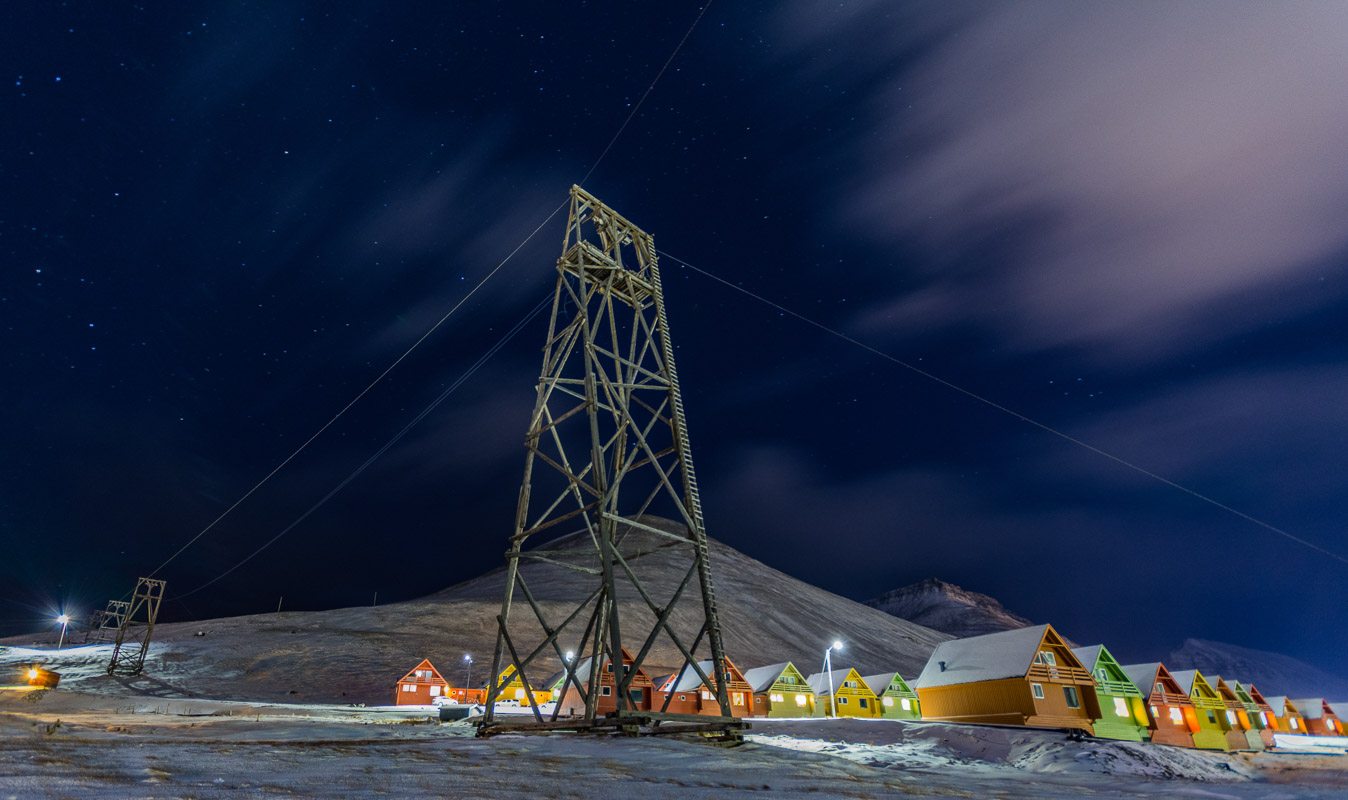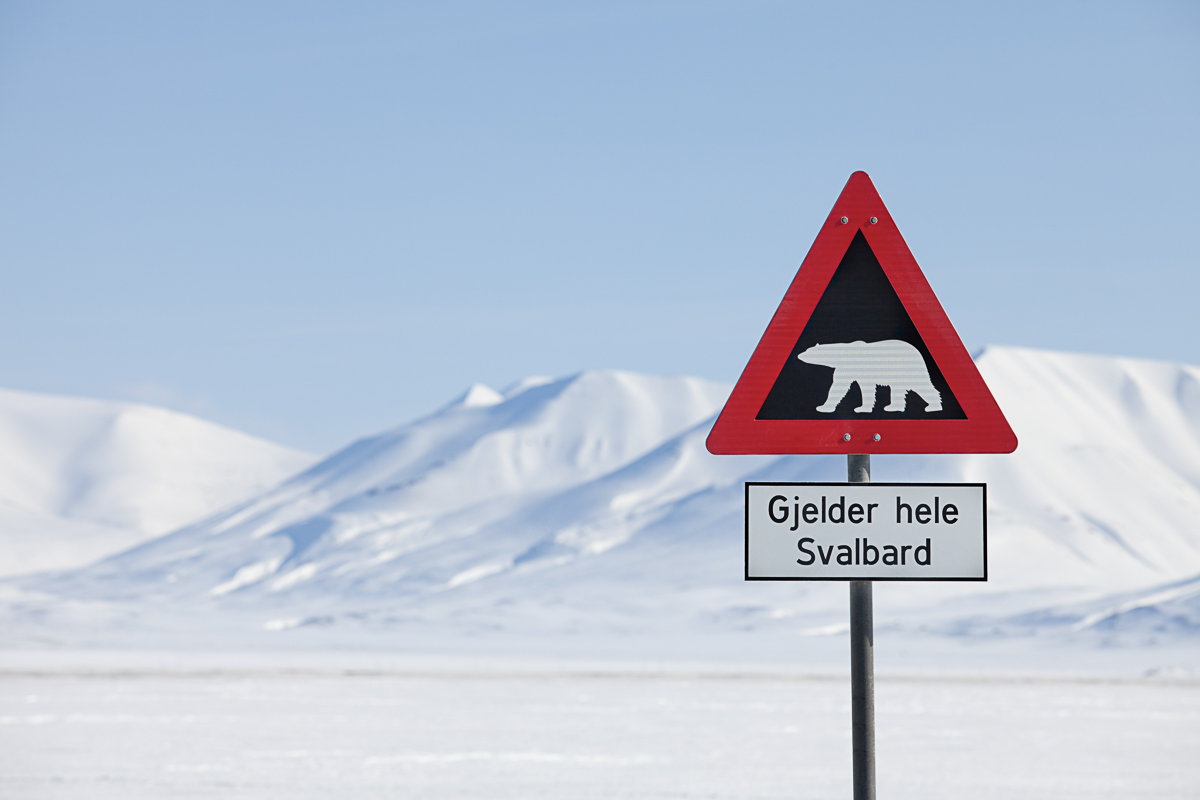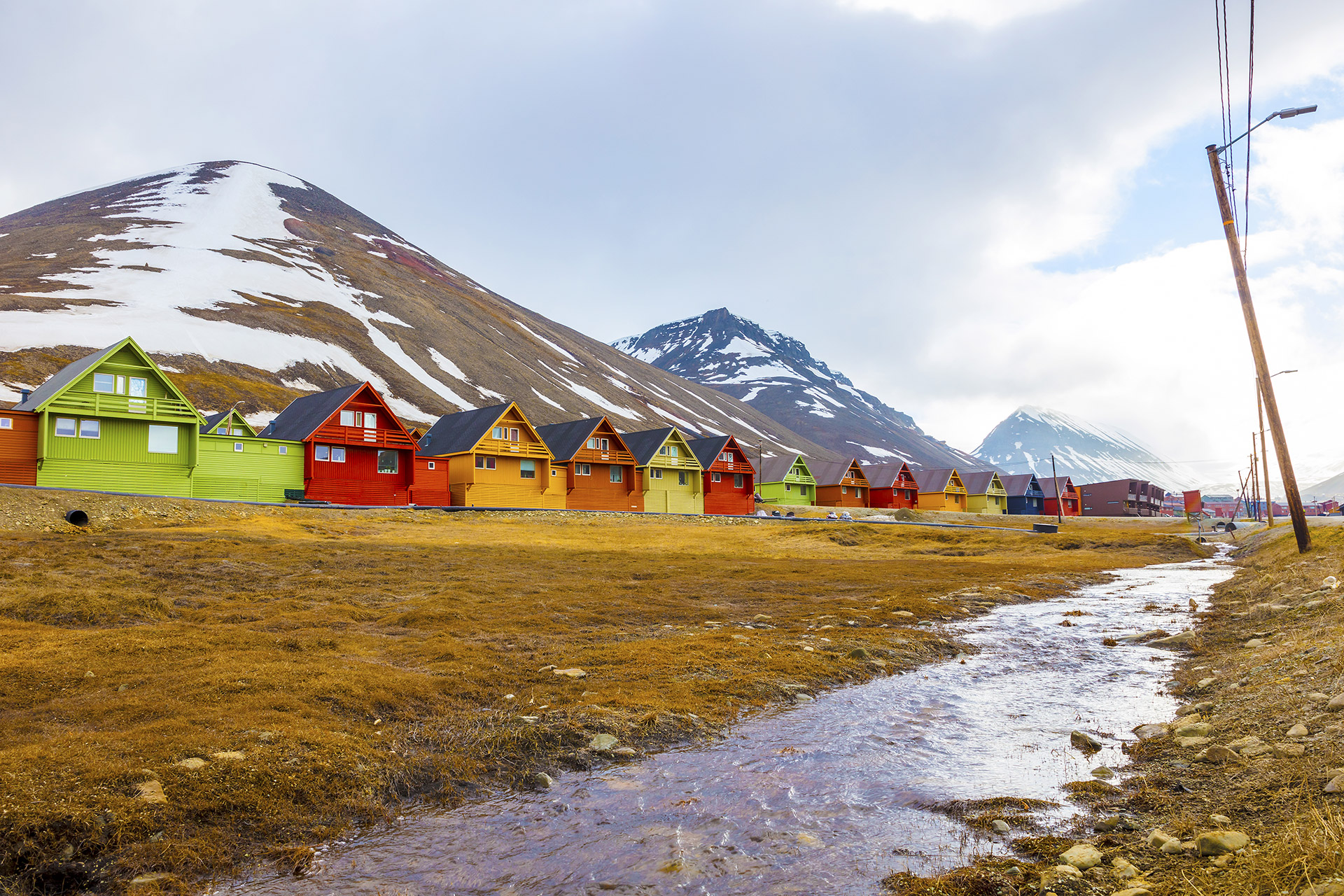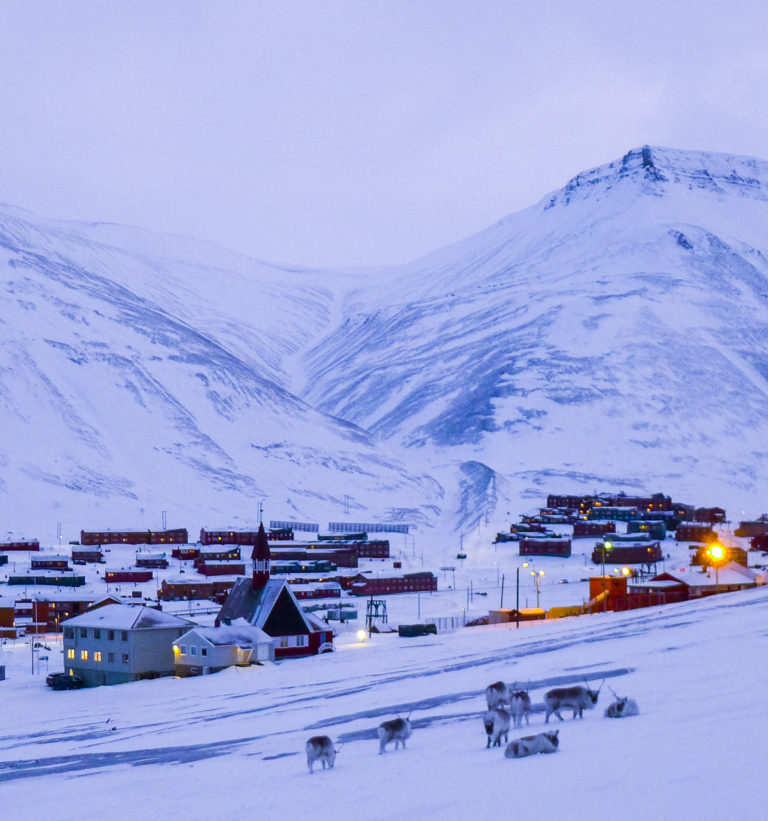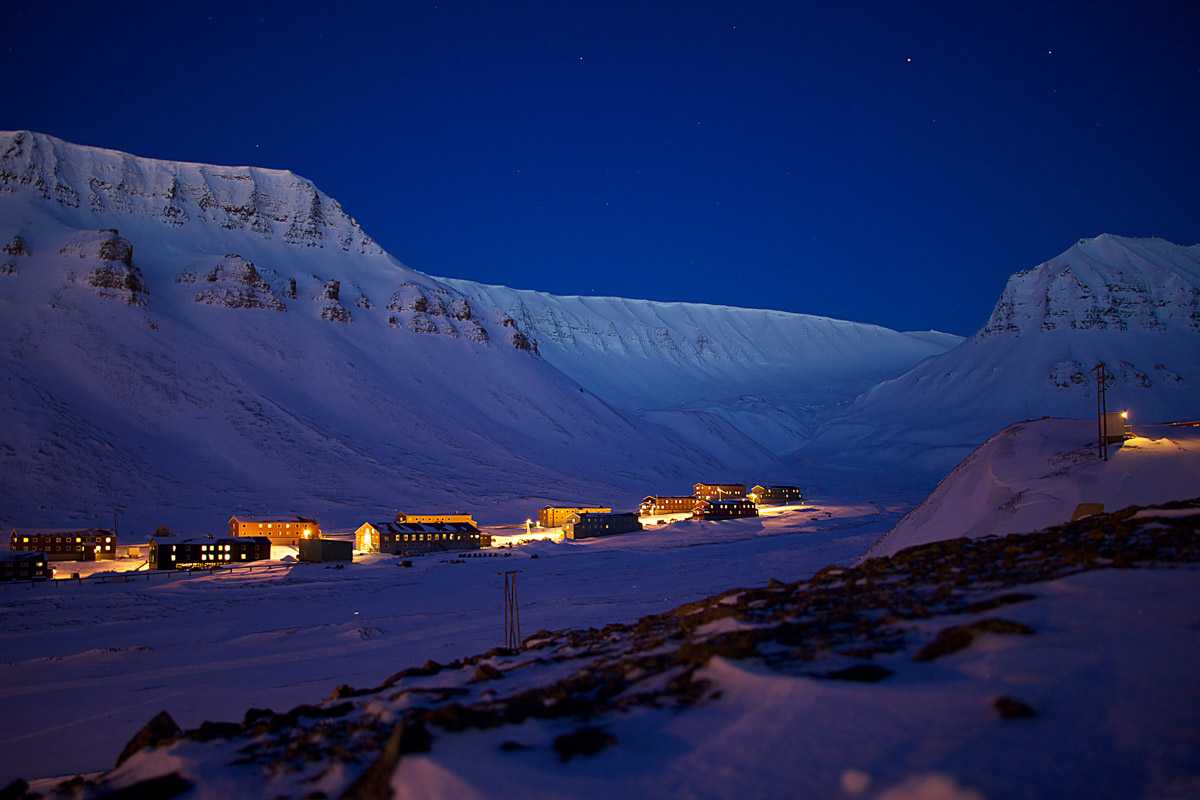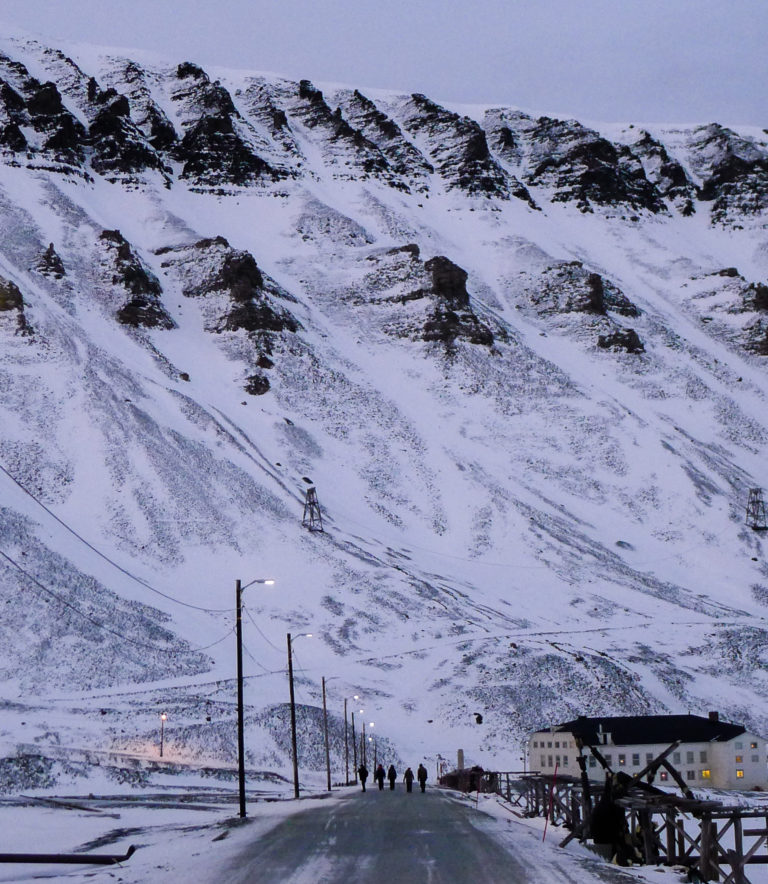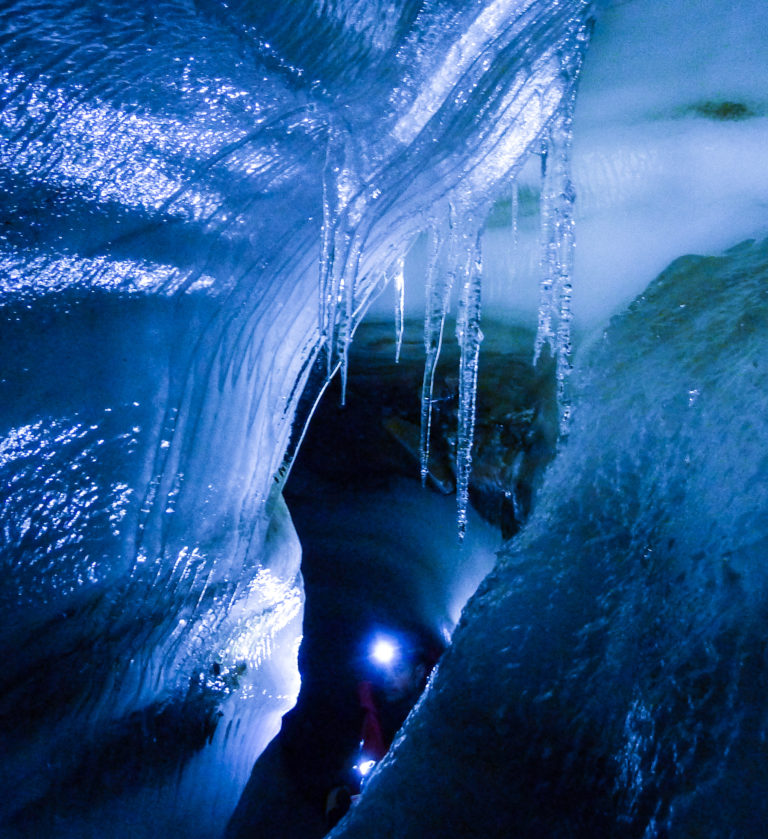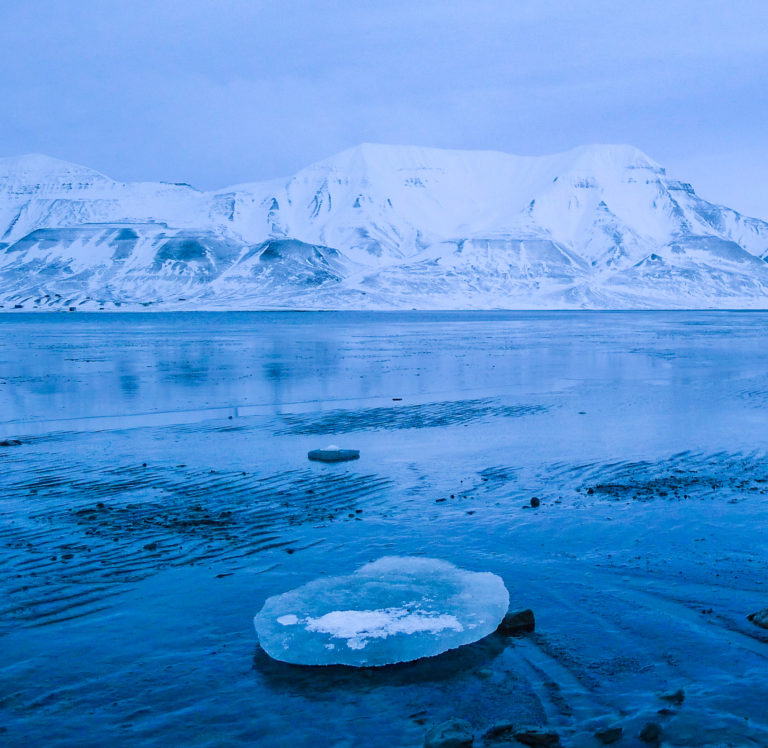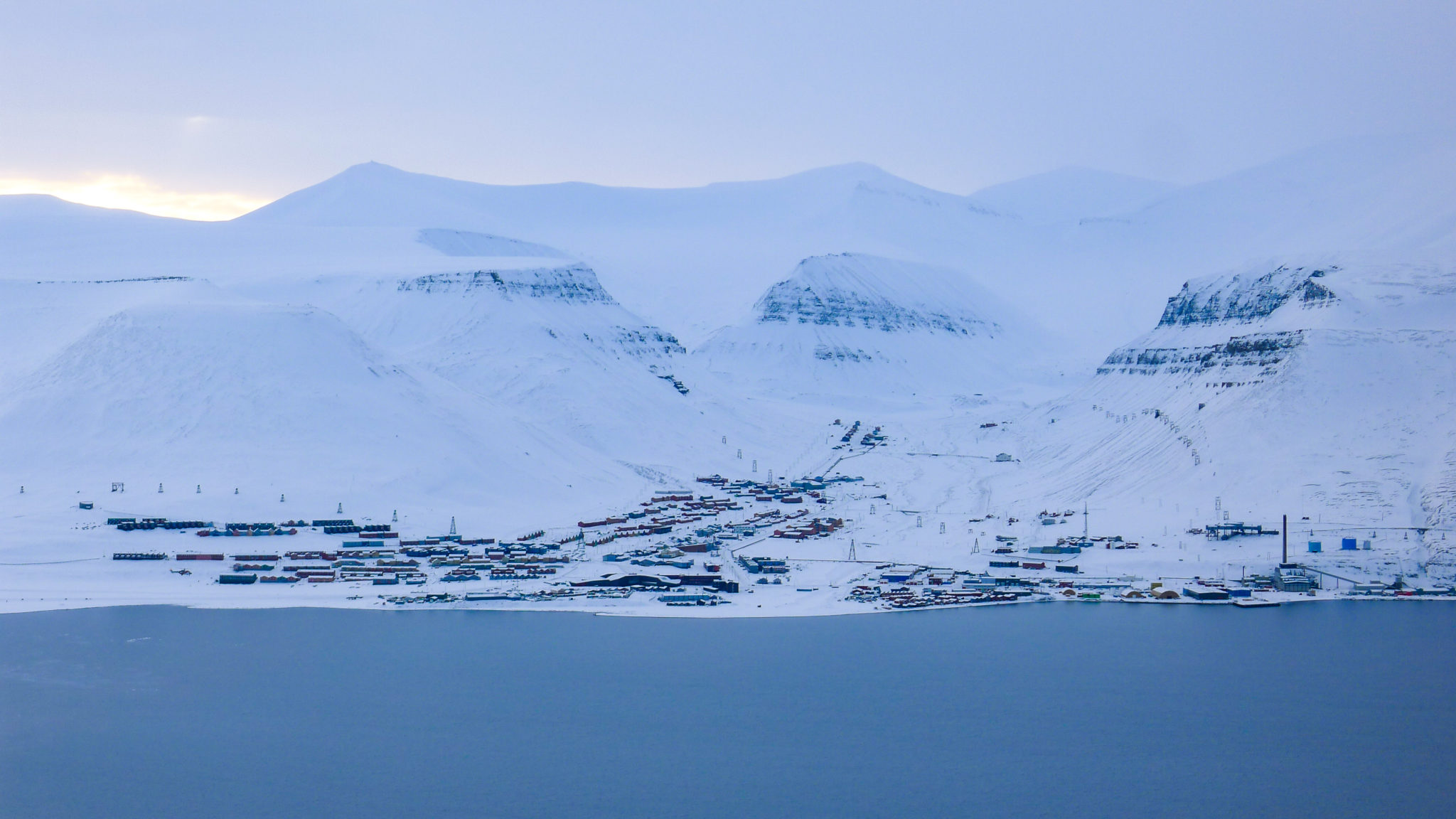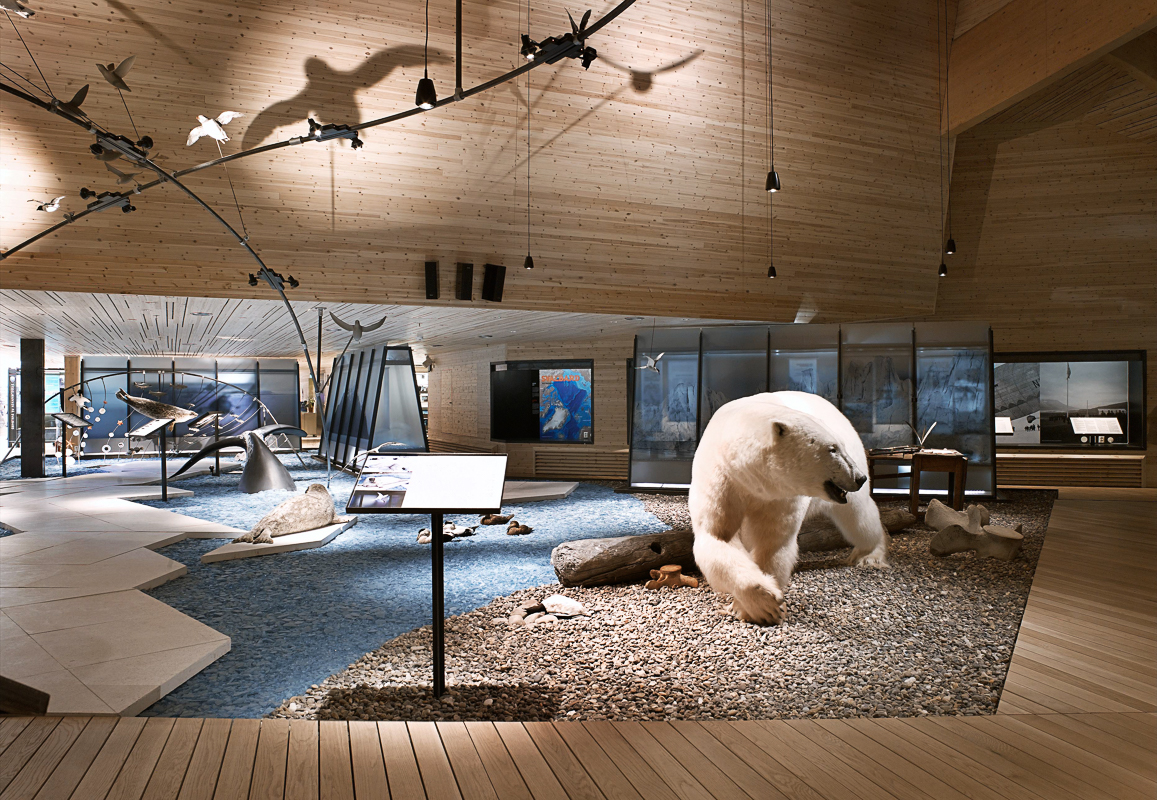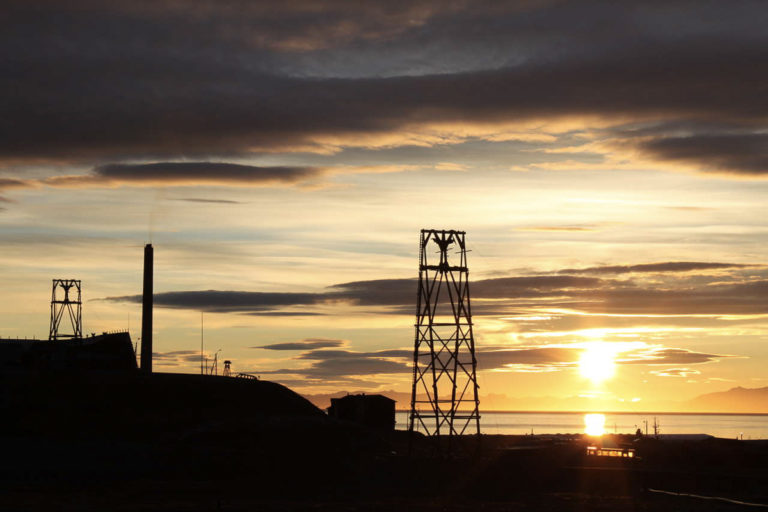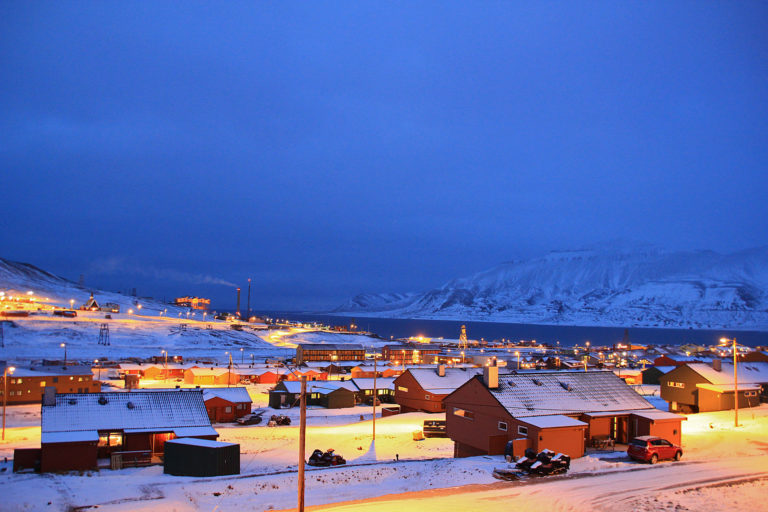The most northerly shopping trip in the world can be made down the main street of Longyearbyen on Svalbard. Here you will find many things you might not have expected to find only 1,100 km from the North Pole.
Most of the service functions are clustered together in line along Longyearbyen’s main street; with cafés, restaurants, shops, post office, bank and the newly opened cultural centre all lying strategically close. People walking around in one-piece snow scooter-dresses, and a proliferation of small, discreet signs inviting you to “Please leave your gun here”, nevertheless say something about the conditions up here in the high Arctic. Let it be said once and for all; no-one comes to Svalbard to shop, but it is still fun to spend a little time in downtown Longyearbyen on the way to a snow scooter safari or a kayak paddling trip.
As a tax-free zone it’s not too expensive
Since the Norwegian territory of Svalbard is a tax-free zone with no VAT or other tax, it is usually a bit cheaper here. The selection in the shops is surprisingly large, probably owing to the relatively high purchasing power of a population who pay little tax, are well educated and/or work long shifts in the mines.
Practical information about Longyearbyen
Longyearbyen is located on Svalbard, an archipelego located 958km north of Tromsø at 78 degrees north. Both SAS and Norwegian offer flights to Longyearbyen from Oslo, usually making a passenger pick up stop in Tromsø on the way.
This all depends on the purpose of your visit. Longyearbyen has polar night from late October all the way until mid february. From mid November to Mid January there is true Polar Night where there is no light in the sky, not even twilight. Therefore if you are visiting for wildlife and nature, the dark winter months can be difficult. The best advice if you do want to visit during the Polar night, is to choose dates where full moon is taking place. The full moon light will illuminate all the scenery you would hope to see, not to mention provide a great setting for watching the midday auroras that are possible to see in Longyearbyen.
Springtime, however, is probably the most popular time to visit Svalbard. From late February until early May you transition from short daylight days to 24h sunlight in rapid transition. At the same time, mother polar bears are leaving their winter hideouts with cubs and the sun beams down on the archipelego, but not enough to cause huge melting of the snow. Many snowmobile tours run and boat trips start to various locations around the area. If still cold enough, you can even go glacier caving through the meltwater channels of the glaciers above Longyearbyen.
Summer into autumn comprises only of late June to mid August. During this time much of the snow melts and hiking is the way to go and explore. However, never leave the settlement without a gun and or guide. Polar bears are always a threat. Boat tours around the island are popular during this time, and cruises to the east coast especially give guests a high likelihood of seeing polar bears on land, for photographers this means having a good telelens.
Due to Longyearbyen’s high latitude and sheltered location temperatures are very cold during the winter months and rarely warm during the Summer either. The lowest temperature ever recorded in the settlement was -46.3 Celsius (-51.3 Fahrenheit) in March 1986 while the warmest temperature was 21.3 Celsius (70.3 Fahrenheit) in July 1979. The daily mean temperature during July is 7.2 Celsius (45 Fahrenheit) and during the coldest month March, -12.2 Celsius (10 Farenheit). It is worth noting that in the last 30 years that mean has increased by 2 degrees Celsius and continues to increase today. Just remember if you are taking a tour out of the settlement it can be much colder where you’re going, so take all layers at all times.
The best place to find all the information you need is on the Visit Svalbard webpage.
Outdoor clothing is a speciality here
The selection of outdoor equipment and clothing in the sporting-goods shops is quite impressive. The assistants, all well used to the outdoor life, are highly experienced in using equipment under high Arctic conditions, so there is plenty of good help and advice to be had. Nor is there any shortage of the latest fashionable clothing and interior design. Nordpolet is the place to buy duty-free alcohol and cigarettes.
Longyearbyen has regular and gourmet dining options
The world’s most northerly coffee bar serves espresso and quiche, just as on any big city boulevard. The piles of heavy outdoor clothing are, however, indicators of the cold climate outside. Longyearbyen’s restaurants and cafés offer a good selection of food, from the finest gourmet dining to simple pizzas and burgers.
The essence of the nightlife is humour
Anyone choosing to spend a few years of their life working on Svalbard is probably relatively self-reliant and fearless. Long, dark winter nights spur people to seek contact with one another, so nightlife in Longyearbyen is very much a fun and inclusive experience. There is no strict dress code; it is more important to turn up with plenty of good humour. The nightlife includes a number of bars, all equipped with a huge and impressive selection of expensive whiskies, brandies and other spirits. The locals are also highly knowledgeable and non discriminating.
Out in the suburbs hide Longyearbyen’s gems
Not everything is in Longyearbyen itself. The legendary “Huset”, which was formerly used as a cultural centre with a cinema and theatre stage, has an equally legendary restaurant with an enormous wine cellar, and is situated slightly set apart up the valley. Mary-Ann’s Polarrigg hotel at Skjæringa has both a winter garden with a Thai restaurant, a spa and a bar with outdoor hot tub. If you are dressed less warmly for a party, a taxi is included as part of the service in Longyearbyen.
